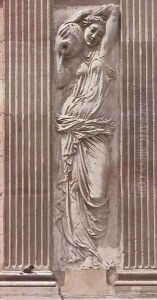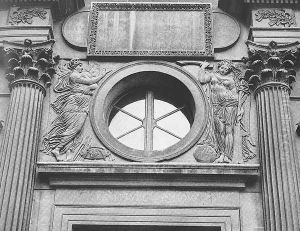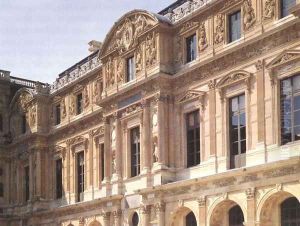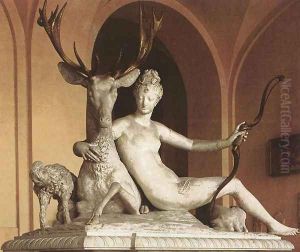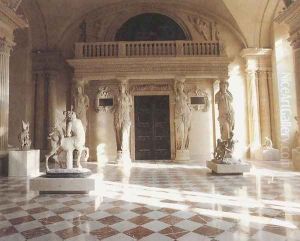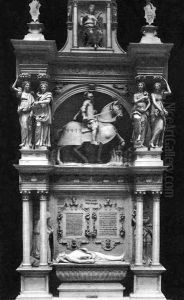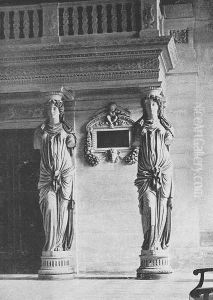Jean Goujon Paintings
Jean Goujon was a French Renaissance sculptor and architect, whose elegance and refinement in sculpture have led many to regard him as one of the foremost artists of mid-16th century France. Born around 1510, details of his early life are scarce, but by the 1530s, he had emerged as a prominent figure in the French art scene. His work is characterized by its classical influence, harmonious proportions, and the delicate treatment of surfaces, reflecting the ideals of the French Renaissance.
Goujon's career flourished under the patronage of the French court, particularly during the reign of King Henri II. He was responsible for much of the decorative work at the Louvre Palace, including the famous reliefs on the Fountain of the Innocents (Fontaine des Innocents) in Paris, completed around 1549. This fountain is considered one of his masterpieces, showcasing his skill in creating fluid, dynamic figures that seem to defy the limitations of the medium. His contributions to the Louvre also include the design of the Caryatids Room, where his sculptures serve as elegant supports for a musicians' gallery, demonstrating his innovative approach to integrating sculpture with architecture.
In addition to his work at the Louvre, Goujon was involved in other significant projects, such as the decoration of the Château d'Anet, commissioned by Diane de Poitiers, mistress of Henri II. His sculptures for the château, including the Nymphs of Diana, exemplify his talent for capturing the grace and beauty of the human form, imbuing his figures with a sense of idealized elegance that is emblematic of the French Renaissance.
Despite his success, Goujon's career was abruptly interrupted by the outbreak of the French Wars of Religion. As a Protestant, he faced increasing danger as the conflict intensified, and his activities from the late 1560s are poorly documented, leading to various speculations about his fate during this turbulent period. It is believed that he died around 1568, possibly as a result of the sectarian violence that ravaged France at the time.
Jean Goujon's legacy endures through his significant contributions to French Renaissance art, marked by his mastery of form and his ability to infuse classical ideals with a uniquely French sensibility. His work not only reflects the artistic and cultural aspirations of his era but also continues to be admired for its beauty and technical excellence.
